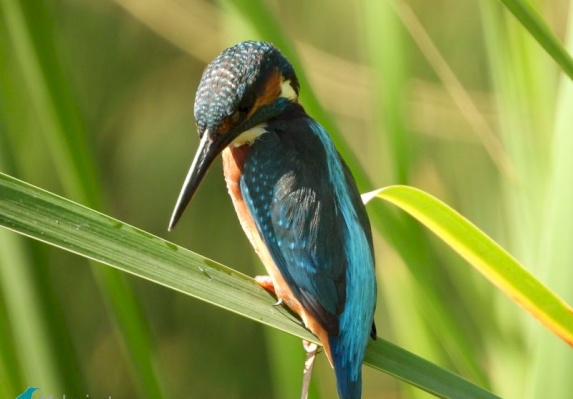Common Kingfisher
/ Alcedo atthis
/ سّماك شائع رفراف اوروبي
© All rights reserved by www.mahmiyat.ps
|
The Common Kingfisher belongs to the Alcedines family in the Coraciiformes order.
It is 17-19 cm in size and 20-37 grams in weigh and that’s makes it the smallest species of Kingfisher in the region. The Kingfisher is known for its beautiful colors: metallic blue-turquoise upperparts and brown-orange under parts. It has a large head and a very long pointy bill. The tail is stubby and the legs are short. When it stands still on a perch it is usually quite difficult to notice, despite its bright colors.
The Kingfisher mostly hunts fish from a perch 1–2 meter above the water. It stands on a branch or riverbank, bill pointing down as it searches for its prey. When the prey is spotted, the Kingfisher flies headfirst into the water and dives in like a missile to catch his meal. How does he do that? Well, the Kingfisher has a unique transparent third eyelid which protects his eyes and allows him to keep them open under water.
The Kingfisher is able to swallow fish which are even half its body length. Sometimes it can be seen beating large fish it caught against the branch it's standing on in order to soften the fish before it swallows it down. The nest is a 1 meter long burrow in the riverbank that is dug by the pair of Kingfishers. Inside the burrow the female will lay 5 to 7 eggs. The distribution of the Kingfisher is widespread and goes throughout Europe, Asia and North Africa. The northern populations migrate south in the winter when the lakes and rivers freeze due to their dependence on water sources.
Conservation status: Least Concern.
Regional status: Least Concern.
Migratory behaviour: Migration
Sites: Beitillu nature reserve
|

